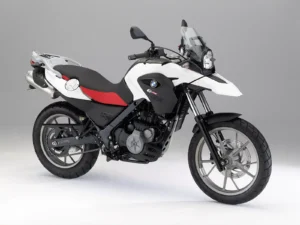Choosing the right simple bike for your lifestyle can be a fun and rewarding process. Simple bikes, or bicycles with fewer gears and features, offer an excellent blend of convenience, efficiency, and low maintenance. This guide will walk you through key considerations to help you select the perfect simple bike that matches your needs, preferences, and lifestyle.
1. Determine Your Riding Purpose
The first step in choosing the perfect simple bike is to define your primary riding purpose. Consider how you plan to use your bike:
- Commuting: If you need a bike for daily commuting, look for one that is durable, comfortable, and equipped with necessary features such as a rack for your belongings and fenders for all-weather riding.
- Recreational Riding: If you’re riding for leisure, comfort and ease of use are critical. Consider a bike with an upright seating position and a comfortable saddle.
- Fitness: For fitness rides, a lightweight bike with a good balance between speed and comfort will be suitable.
- Urban Exploration: Bikes that are easy to maneuver and park are ideal for exploring city streets and paths.
2. Consider the Terrain
The terrain you plan to ride on influences the type of bike you should choose:
- Flat and Paved Roads: A road How to Choose the Perfect Simple Bike for Your Lifestyleor a hybrid bike is suitable for smooth surfaces, providing speed and efficiency.
- Mixed Terrain: A hybrid bike with slightly wider tires can handle both paved and unpaved surfaces, offering versatility.
- Rough Terrain: If you plan to ride on dirt trails or uneven surfaces, consider a mountain bike with wide tires and a sturdy frame.
3. Assess Your Comfort Needs
Comfort is essential for an enjoyable ride, especially if you plan to ride long distances:
- Frame Material: Choose between aluminum, steel, or carbon fiber frames. Aluminum is lightweight and affordable, steel offers a smooth ride, and carbon fiber provides a balance of lightness and strength but at a higher cost.
- Handlebar Style: Flat handlebars offer a relaxed riding position, while drop handlebars allow for multiple hand positions and an aerodynamic posture.
- Saddle: Test different saddle types to find one that suits your body and riding style. Consider a padded saddle for added comfort.
4. Evaluate Maintenance Requirements
Simple bikes typically require less maintenance, but some components still need regular checks:
- Brakes: Choose between rim brakes, disc brakes, or coaster brakes. Disc brakes offer better stopping power and performance in wet conditions, while rim brakes are lighter and more affordable.
- Gears: Single-speed bikes are low maintenance but may require more effort on hilly terrain. If you need gears, consider a bike with a simple gear system to minimize maintenance.
- Tires: Opt for puncture-resistant tires to reduce the risk of flats, especially if you plan to ride on rough surfaces.
5. Budget Considerations

Set a budget that aligns with your needs and preferences:
- Entry-Level Bikes: These are affordable and suitable for casual riders or those just starting.
- Mid-Range Bikes: These offer better components and performance for regular riders.
- High-End Bikes: These bikes feature advanced materials and technologies, ideal for enthusiasts and serious riders.
6. Test Ride Different Models
Test riding different bike models is crucial to finding the perfect fit:
- Fit: Ensure the bike fits your body. A properly sized bike improves comfort and efficiency.
- Handling: Test the bike’s handling, responsiveness, and maneuverability.
- Comfort: Pay attention to how comfortable the bike feels during the ride.
7. Consider Additional Features
Depending on your needs, you may want to consider additional features:
- Lighting: Integrated lights improve visibility and safety during nighttime rides.
- Suspension: Some bikes come with front suspension to absorb shocks, providing a smoother ride on rough surfaces.
- Accessories: Consider adding a bell, water bottle holder, or panniers for extra convenience.
8. Think About Future Needs
Anticipate your future biking needs:
- Upgradability: Choose a bike that allows for easy upgrades and modifications.
- Versatility: Opt for a bike that can adapt to different riding styles or purposes as your needs evolve.
9. Seek Expert Advice
Consult with bike shop experts or experienced riders for personalized advice:
- Bike Shops: Local bike shops can provide valuable insights, fitting services, and maintenance support.
- Online Forums and Reviews: Research online for reviews and forums to gather information from other riders.
10. Make an Informed Decision
Combine your research, test rides, and expert advice to make a well-informed decision. Remember that the perfect bike for you is one that meets your riding needs, fits your budget, and makes you excited to ride.
Conclusion
Choosing the perfect simple bike for your lifestyle is a process that involves understanding your needs, considering different features, and making an informed decision. By following these steps, you can find a bike that will provide you with joy, convenience, and a sense of freedom every time you ride. Happy biking.

